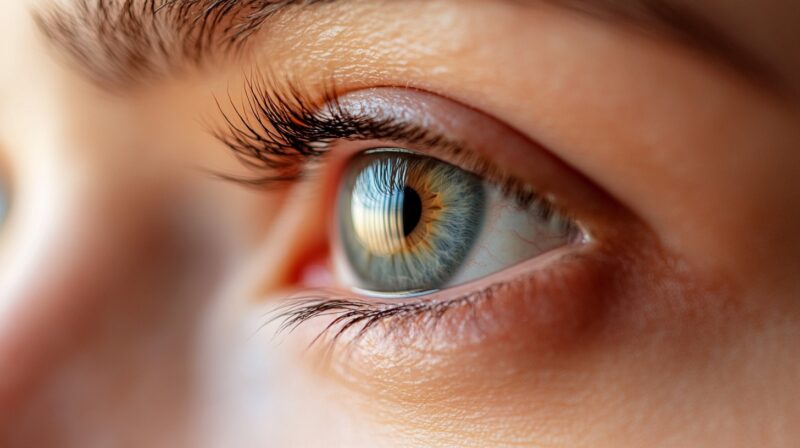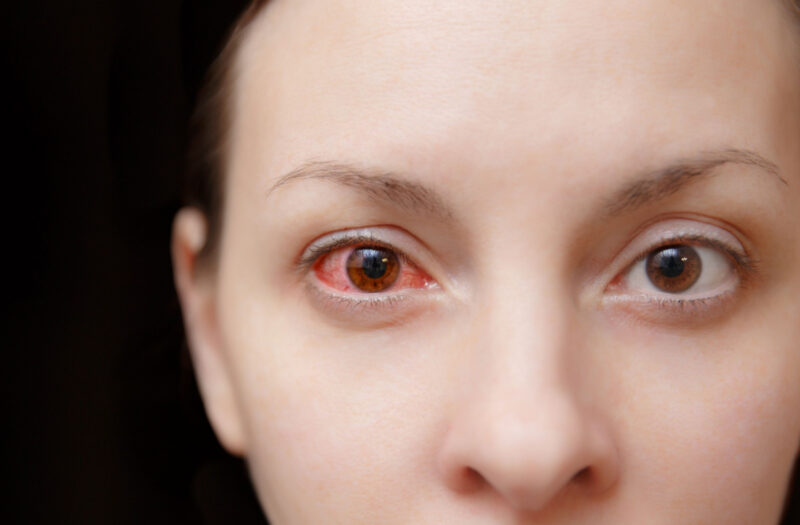Pink eye, or conjunctivitis, is a common condition that causes redness, irritation, and discharge in the eyes.
While it can be triggered by infections, allergies, or irritants, the contagious nature of some types raises concerns about activities like swimming.
Many people wonder if taking a dip in a pool or the ocean could make the condition worse or put others at risk.
Medical professionals emphasize key factors that determine the safety of swimming with pink eye, including its cause, severity, and potential to spread.
Let us talk about it in greater detail.
What are the Causes?
Pink eye, medically referred to as conjunctivitis, is a widespread condition that affects individuals of all ages, though it is particularly common in children.
Identifying the right type is essential for determining the best course of treatment and minimizing discomfort.
Below are the primary types of pink eye, along with their causes and characteristics.
Types of Pink Eye

Several forms of conjunctivitis exist, each originating from a distinct source.
The key types include:
- Viral Conjunctivitis – Frequently linked to viruses that also cause the common cold, this type is highly contagious. It spreads easily in schools, workplaces, and other group settings.
- Bacterial Conjunctivitis – Caused by bacteria such as Staphylococcus aureus or Streptococcus pneumoniae, this form is also highly contagious. It is often accompanied by thick, yellow, or green discharge, which can cause the eyelids to stick together after sleep.
- Allergic Conjunctivitis – Triggered by allergens such as pollen, dust, or pet dander, this form is not contagious. It affects both eyes and is commonly associated with itching, excessive tearing, and swollen eyelids.
- Irritant Conjunctivitis – Resulting from exposure to irritants like smoke, strong chemicals, or chlorine in swimming pools, this type causes temporary discomfort. It is not caused by bacteria or viruses, making it non-contagious, but it can still lead to eye redness, burning, and sensitivity.
Common Symptoms of Pink Eye
Recognizing pink eye symptoms early allows for prompt management and reduces the risk of complications.
- Redness in the white part of the eye and swelling of the eyelids
- Excessive tearing or watery discharge
- Thick discharge that can be yellow or green, particularly with bacterial conjunctivitis
- Sensitivity to bright light, making it uncomfortable to be in well-lit areas
- Itching and irritation, especially with allergic conjunctivitis
- A feeling of grittiness or the sensation that something is in the eye
How Pink Eye Spreads
Some types of pink eye, particularly viral and bacterial conjunctivitis, spread quickly through direct and indirect contact.
Maintaining proper hygiene and being cautious in shared spaces can significantly reduce transmission.
- Direct Contact – Touching or rubbing the eyes after coming into contact with an infected person’s eye secretions can introduce the infection.
- Contaminated Surfaces – Pink eye-causing viruses and bacteria can linger on objects like doorknobs, eyeglasses, towels, and makeup brushes.
- Shared Personal Items – Using someone else’s wash cloths, pillowcases, or cosmetics increases the risk of contracting bacterial or viral conjunctivitis.
- Swimming Pools with Poor Hygiene – While chlorine kills most germs, improper maintenance can allow bacteria and viruses to thrive.
Preventing the Spread of Pink Eye
Taking proactive steps can help prevent the transmission of pink eye and protect both the infected individual and those around them.
- Washing hands frequently with soap and warm water, especially after touching the face
- Avoiding touching or rubbing the eyes, as this can worsen symptoms and spread the infection
- Disinfecting objects that come into contact with the face, including glasses, pillowcases, and makeup tools
- Refraining from wearing contact lenses until symptoms fully resolve, as lenses can harbor bacteria
- Avoiding public pools if diagnosed with viral or bacterial conjunctivitis to prevent potential spread
Can You Swim with Pink Eye?
Swimming while dealing with pink eye presents several concerns, not just for the individual, but for everyone sharing the water. The potential for spreading the infection is particularly high in pools, lakes, and other communal swimming areas.
Medical professionals strongly advise evaluating the risks before entering the water while experiencing symptoms.
Below, key factors highlight why swimming during an active infection can be problematic.
Risks of Swimming with an Active Infection
These infections spread rapidly through direct contact or by contaminating surfaces, including water, in shared environments.
The Centers for Disease Control and Prevention (CDC) stresses the importance of staying out of pools to prevent outbreaks.
- High Transmission Rate: Viral and bacterial conjunctivitis spreads easily in water, increasing the likelihood of infecting others.
- Contaminated Surfaces: Pool railings, ladders, and flotation devices can carry the infection after contact with an infected person.
- Public Health Concerns: In a crowded swimming area, multiple people can be exposed, leading to a broader spread of pink eye cases.
Impact of Chlorine on Pink Eye Symptoms

Many assume that chlorine in pools eliminates all risks associated with pink eye, but this is not entirely true.
While chlorine is effective at reducing certain bacteria, it does not provide complete protection against all pathogens.
Additionally, it can aggravate symptoms, making the infection more uncomfortable.
- Increased Irritation: Chlorine may cause excessive dryness and redness, worsening discomfort.
- Tear Film Disruption: Natural tear production helps protect the eyes, but chlorine can strip away this barrier, leaving the eyes more exposed to irritants.
- Lingering Contaminants: While chlorine reduces bacterial levels, it does not eliminate viral pink eye particles from pool water.
Is Swimming in Natural Water Safe?
Lakes, rivers, and oceans present their own hazards for individuals with pink eye. These environments often contain bacteria, algae, and other microorganisms that could increase the risk of additional infections.
- Unfiltered Water Risks: Unlike pools, natural water sources are not treated to remove harmful bacteria.
- Heightened Sensitivity: An already-inflamed eye is more susceptible to irritation or further infection due to bacteria present in open water.
- Increased Exposure to Pathogens: Various microorganisms found in lakes and rivers can exacerbate symptoms or cause new eye infections.
The Bottom Line
Swimming with pink eye is not advisable. Health professionals, including eye doctors, underline the importance of avoiding swimming until the infection has fully cleared.
If you notice symptoms, seeking prompt and thorough eye doctor advice can be crucial for the right treatment and recovery.




